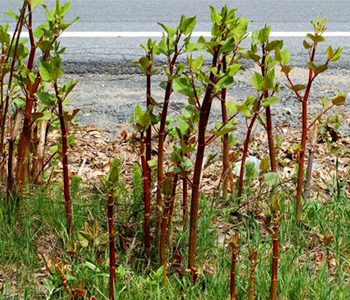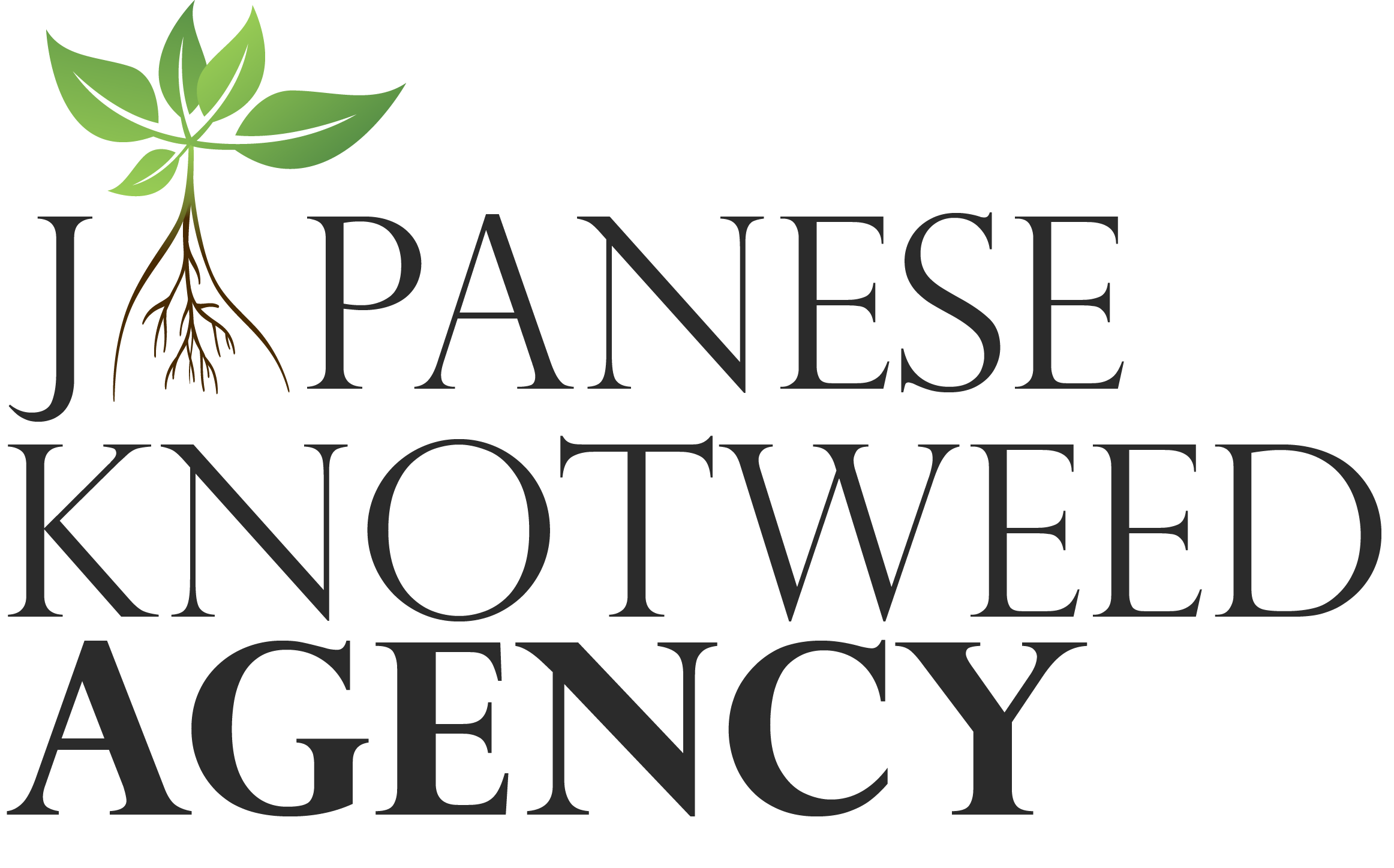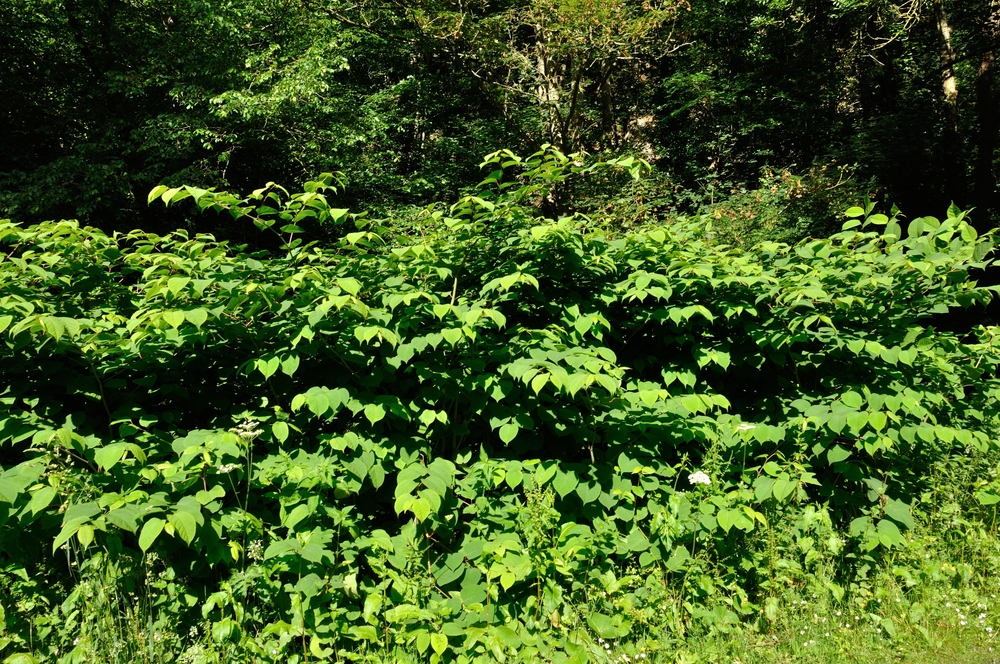Your are here: Home > Japanese Knotweed
Japanese Knotweed Agency
Japanese Knotweed what is it?
Originally brought to Britain from Japan as an ornamental garden plant in the mid-nineteenth century it has, over time, become widespread just about everywhere throughout the country; particularly in urban areas and on roadsides, riverbanks, railway tracks and derelict land. Due to the devastating effect it has on other species as it outcompetes and displaces native flora, it was included on schedule 9 of the Wildlife and Countryside Act in 1981 as a pest species, illegal to grow or cause to spread in the wild. It was then classed as controlled waste under the Environmental Protection Act 1990 necessitating its disposal at specially licensed facilities. Japanese Knotweed is ranked near the top of the world’s most invasive plant species and should never be underestimated.
The significance of Japanese knotweed (scientific name Fallopia japonica), and the potential problems it can bring, has been the subject of increased publicity in recent years as accounts of it pushing its way through tarmac and concrete and growing at excessive rates have been reported. Recent court cases have been concluded in favor of the claimant which will now define the legal process for those affected by encroachment and trespass of Japanese Knotweed based on damage caused to property or land and the costs of chemical treatment or full extraction, or otherwise diminution, the reduction in value of a property because of the locality of Japanese Knotweed.
The seasonal growth of Japanese Knotweed

SEASON: SPRING
ESTIMATED MONTHS: MARCH – JUNE
- Normally you would start to see the early signs of Japanese Knotweed growth around mid-March time
- You should notice with the Japanese Knotweed there would be distinctive red and purple shoots, which will be accompanied by leaves that are rolled back and will grow rapidly due to the nutrients stored in the rhizome.

SEASON: SUMMER
ESTIMATED MONTHS: JUNE – SEPTEMBER
- During Summer, the stems will look like bamboos, but will be greener in colour with purple speckles
- Water and nutrients are stored inside the canes that have distinctive chambers
- The leaves will be large and very green that have pointed tips that extend from the stem in a zig-zag pattern and later in the season you there will be creamy-white flowers that are bunched in clusters from the stalks

SEASON: AUTUMN
ESTIMATED MONTHS: SEPTEMBER – DECEMBER
- During Autumn, the bamboo stems will be hollow and start to turn a dark brown with a lot of foliage surrounding the plant
- The leaves, which were once bright, and green will start to wilt and begin to turn a yellow colour

SEASON: WINTER
ESTIMATED MONTHS: DECEMBER – MARCH
- With frost appearing the leaves will turn brown and the plant will withdraw back into its rhizome
- Water and nutrients are stored inside the canes that have distinctive chambers
- The bamboo canes will lose their colour and turn in to woody stalks(these can take years to decompose)
- In early spring new shoots can be seen growing from the old dead canes and the process starts again.
Do you have Japanese Knotweed near you?
Use our free identification service today and get a response within 30 minutes * to see if you have Japanese Knotweed on your property and how we can help you remove it.
Select Location
The problem of having Japanese Knotweed on your property
Why Japanese Knotweed is problematic?
Despite the horror stories relating to Japanese knotweed and the possible damage it can cause, in truth it is just one of many plants that can pose problems to buildings and other structures. Other perennial plants (including many native British species) can cause similar damage to buildings and underground services and structures. Japanese knotweed has gained a reputation as a triffid-like species with super plant capabilities, able to push its way through buildings and infrastructures. This was picked up by many lenders back in the early 1990s some of whom consequently refused mortgages on properties blighted by the plant. In reality, the main cause of damage to buildings is from its creeping rhizomes (underground stems) finding their way into underground services and structures with shallow foundations.
In the relatively few examples of Japanese knotweed causing major structural damage to homes or commercial buildings, poor construction or negligence has often been a contributory factor in the structural failure. In fact, Japanese knotweed can be no more damaging than any other plant that has a vigorous, fast growing, and extensive perennial root system. Trees and other plants can cause damage to buildings and services as their fine roots penetrate small cracks which then expand as the roots grown. Smaller, faster growing plants like Buddleia can cause significant damage to pavements and areas of hard standing and climbing plants like ivy will smother walls and buildings, eventually weakening or damaging point work, cladding and renders. However, although the structural damage cause by Japanese knotweed may be no more significant than other plants or trees, it isn’t without its problems, and where left, this is where significantly worse problems can arise, including the liability of a claim from neighbors.
Exacerbated Flooding
The ability of the plant to grow in large stands along watercourses can exacerbate flooding by obstructing the free flow of water. This can increase the risk of banks being breached during flood conditions.
Stop Japanese Knotweed today from growing
Removing Japanese Knotweed from your property
It has been estimated by DEFRA that the cost of controlling Japanese knotweed across the UK would be in the region of £1.5 billion. It is not an easy plant to control as the extensive underground rhizome system sustains the plant even when top growth is removed. Therefore, treatment often needs to be repeated for long-term control to be achieved.
Contact the Japanese Kotweed Agency today
It has been estimated by DEFRA that the cost of controlling Japanese knotweed across the UK would be in the region of £1.5 billion. It is not an easy plant to control as the extensive underground rhizome system sustains the plant even when top growth is removed. Therefore, treatment often needs to be repeated for long-term control to be achieved.
Chemical control
Chemical control is the most effective treatment for controlling Japanese knotweed in small stands and most domestic situations, as it kills the extensive rhizome system. Some experts believe the plant can never be killed fully by chemical treatment alone and the only true course of action is full extraction and a chemical treatment course to compliment. Currently, the most commonly used herbicides are Glyphosate based and, for optimum effect, they should be used in late summer. To ensure treatments are effective repeated inspection and treatments is recommended over the space of several years for complete control of the plant. Ensure a qualified person is used to undertake such treatments. All contractors should hold a National Proficiency Test Council (NPTC) certification (namely PA1 and PA6). Using a PCA approved specialist will ensure this level of qualification and expertise. An Insurance Backed Guarantee should always be provided by firms offering and undertaking a chemical treatment plan for the protection of the homeowner.
Non – Chemical Control
Cutting, mowing, or pulling are alternative methods to using chemicals though are not recommended as they risk spreading the plant and are not effective at removing large and long-established infestations. For Japanese knotweed control in green or brown field building development sites, excavation, sieving, burial, and root barriers treatments in conjunction with monitoring and chemical treatments may be appropriate. These works require high levels and skill and care and must only be undertaken by skilled and competent specialist contractors. Any cutting methods that produce fragments should be avoided as just a small part of the stem can produce a new plant.
Disposal
All Japanese knotweed waste (including the stems, leaves, rhizomes, and crown) must be disposed of correctly to prevent the spread of the plant and meet with legislative requirements.
IMPORTANT INFORMATION
If Japanese knotweed is found, it is the responsibility of the landowner to control the plant, although they do not currently have to remove it. However, it is worth remembering that causing the plants to spread by removing or disposing of them incorrectly is illegal, so it is imperative that it is dealt with by specialists who can ensure effective treatment and/or removal of the species.


